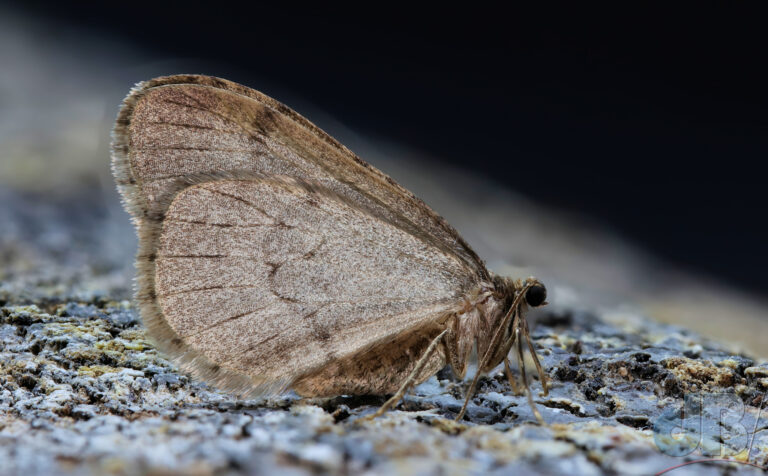This unassuming little moth has a suitably unassuming little name. It is known as the Winter Moth. It is one of the geometers, or what is referred to as inchworms in North America, because the larvae seem to measure out the earth as they move inch by inch.

The Winter Moth is not to be confused with the November nor the December Moth. It flies at the opposite end of the season to most other moths – October to December and sometimes into January and even February. It is unlikely to ever cross paths with the Spring Usher, the May or July Highflyers although it may well overlap with the Autumnal Moth and perhaps even the Autumnal Rustic, and definitely the aforementioned November and December.
While its common name is rather unassuming and perhaps obvious given the season in which it the males are on the wing (the females are flightless), this belies a resilience and a resistance to the cold that many other creatures do not display. Indeed, while some warm-blooded mammals from hedgehogs to bears will seek out shelter and hide themselves away from the ice and snow during hibernation, this little creature is searching for a mate. Incidentally, the females simply crawl up tree trunks and exude sex pheromones to draw the attention of amorous males.
The females then lay a couple of hundred eggs in crevices in the bark of trees. The larvae don’t emerge until the spring when the daytime temperature reaches about 10 degrees Celsius. Historically, this would have been perfect timing for the larvae to feed on the newly opening leaf buds of their host trees. But, with climate change, that temperature is consistently reached several days before those tasty leaf buds have begun to appear. As such, many larvae that emerge when the temperature rises and the leaf buds have not yet opened simply starve. Evolution, however, has a way. There is evidence that some larvae that incidentally hatch later, when it’s warmer still, can feast on leaf buds. As such, they survive to mate as adults in the winter and so pass on their genes. Among those genes will, of course, be the ones that trigger them to emerge when the temperature is a little higher and so coincide with the opening leaf buds.
The moth’s scientific name is Operophtera brumata, the brumata meaning “short” and alluding to the length of the days at this time of year. I am not 100% certain of the etymology of the first part of the name, the genus Operophtera. Opero could mean I work and the second half could be “to destroy” from the Greek, or it could be a tweak on “wing”, which can be ptera or phtera, I believe. So, it could mean “I work to destroy” or “I work my wings”. Given that the larvae can ravage a small tree’s foliage leading to a halving of the tree’s growth that year, perhaps “I work to destroy” is apt.
I’ve recorded Winter moth since I began nothing, but not every year and only one specimen per season – 2018, then 2021, 2022, and now 2023.
For US readers, the closest relative is the Bruce Spanworm, Operophtera bruceata.